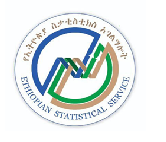About Us
Introduction
Statistical data collected and compiled using scientific methodologies are crucial for accelerating the economic, social and democratic activities of a country, and for enhancing peoples’ lives. Moreover, these data enable the Government and other institutions to formulate policies for various sectors, to monitor and evaluate policy implementations, and to make informed decisions going forward.
The Ethiopian Statistics Service (ESS) collect and compile data from sample surveys, censuses and administrative records, and also analyze data and deliver report for various sectors and users. Additionally, the ESS provides technical guidance and assistance to government agencies, institutions and individuals to help them to establish administrative recording, registration and reporting systems and to build the capacity required for providing directives and consultations on the development of administrative records and registration systems. In general the ESS leads the statistical system of the country.
To maintain internationally accepted standards and to satisfy the excessive demands of statistical data the ESS is diversifying its statistical methodologies and up grading the use of technology in its data collection, compilation, classification, analysis and dissemination methods.
Besides narrating the vision, mission, objectives, duties and responsibilities of ESS this booklet aims to highlight the importance of data which is acquired in various ways.
Background
Though statistics work in Ethiopia started many years ago, an organized system was created in the late 1950s in part because statistical data was by then also in demand for the development of socioeconomic plans. In addition, in 1952 there had been a conference for Statisticians of African countries in the African Economic Commission. At this conference there was an agreement among participants to submit a five year statistical action plan, which also encouraged our country to create a more organized statistical system. Proclamations in 2006 and 2007, to renew the Central Statistics Authority and to establish the Population Census Commission, respectively, were fundamental in creating the statistical system ESS has today.
The name Central Statistics Agency was given to the office in 2007 when the Counsel of Ministries was reestablished in proclamation 471/98. ESS was established in 1959 under the instruction of the Minister of Trade and Industry with 14 professional staff members. Now ESS has 2439 full time professionals and 3000 temporary workers, who are involved in different activities due to the range of studies conducted. Moreover, ESS has 25 branch offices across the nation in order to accomplish its duties and responsibilities
Introduction
Statistical data collected and compiled using scientific methodologies are crucial for accelerating the economic, social and democratic activities of a country, and for enhancing peoples’ lives. Moreover, these data enable the Government and other institutions to formulate policies for various sectors, to monitor and evaluate policy implementations, and to make informed decisions going forward.
The Ethiopian Statistics Service (ESS) collect and compile data from sample surveys, censuses and administrative records, and also analyze data and deliver report for various sectors and users. Additionally, the ESS provides technical guidance and assistance to government agencies, institutions and individuals to help them to establish administrative recording, registration and reporting systems and to build the capacity required for providing directives and consultations on the development of administrative records and registration systems. In general ESS leads the statistical system of the country.
To maintain internationally accepted standards and to satisfy the excessive demands of statistical data the ESS is diversifying its statistical methodologies and up grading the use of technology in its data collection, compilation, classification, analysis and dissemination methods.
Besides narrating the vision, mission, objectives, duties and responsibilities of the agency this booklet aims to highlight the importance of data which is acquired in various ways.
Background
Though statistics work in Ethiopia started many years ago, an organized system was created in the late 1950s in part because statistical data was by then also in demand for the development of socioeconomic plans. In addition, in 1952 there had been a conference for Statisticians of African countries in the African Economic Commission. At this conference there was an agreement among participants to submit a five year statistical action plan, which also encouraged our country to create a more organized statistical system. Proclamations in 2006 and 2007, to renew the Central Statistics Authority and to establish the Population Census Commission, respectively, were fundamental in creating the statistical system ESS has today.
The name Central Statistics Agency was given to the office in 2007 when the Counsel of Ministries was reestablished in proclamation 471/98. ESS was established in 1959 under the instruction of the Minister of Trade and Industry with 14 professional staff members. Now the ESS has 2439 full time professionals and 3000 temporary workers, who are involved in different activities due to the range of studies conducted. Moreover, the ESS has 25 branch offices across the nation in order to accomplish its duties and responsibilitie
Vision
“To become globally competent and the center of excellence for reliable official statistical data.”
Mission
“ our mission is generating, analyzing, and disseminating reliable statistical data timely and appropriately to the users by establishing integrated systems & undertaking standardized scientific methods and modern technologies transparently and professionally.”
Our Surveys
News
Ethiopian Statistical Service (ESS) Plan to Use Big Data as Complement of Traditional Data Source
The Ethiopian Statistical Service is in the process of finding and using big data to make better statistics. Big data are large and complex amounts

